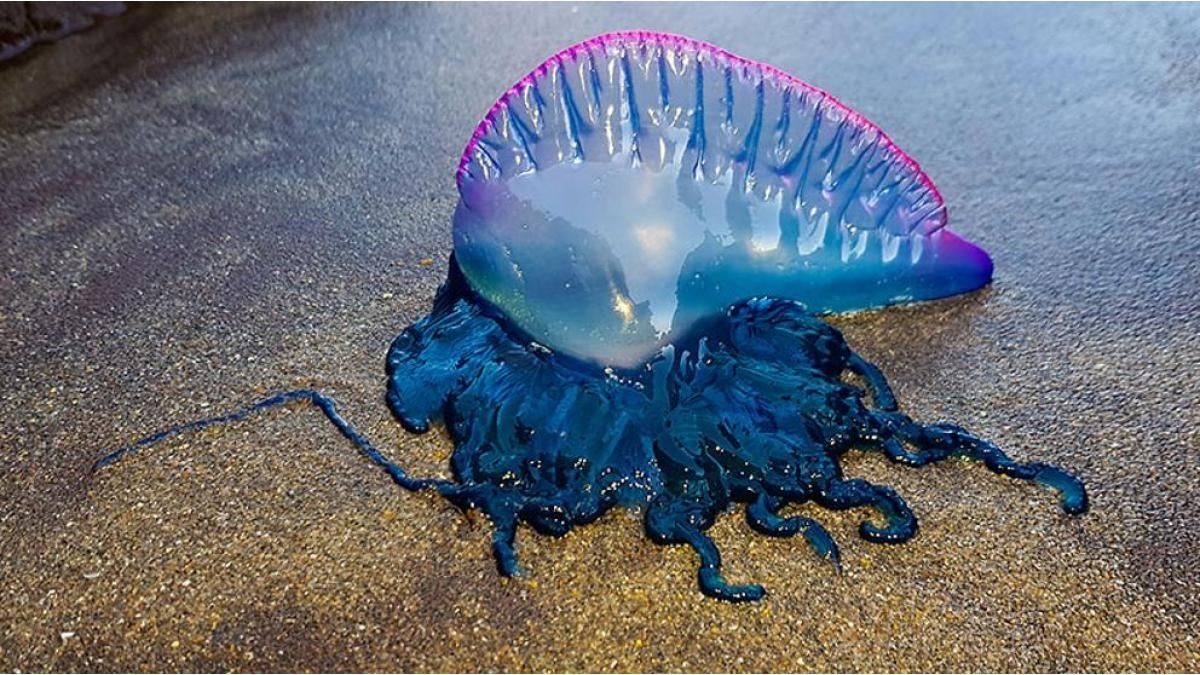The Portuguese caravels began to appear in large numbers around the beaches of Uruguay recently. The bites can cause severe skin lesions, as well as systemic reactions. Given the proximity to the country, they warn about a possible arrival in the beaches from Argentina.
Physalia physalis or Portuguese man-of-war looks like a jellyfish, but belongs to a completely different group of animals, the siphonophores. In that sense, while the jellyfish is a single individual, the siphonophores They are a colony.
Individuals in the colony and each of the four specialized parts of a caravel is responsible for a specific task, such as floating, capturing prey, feeding and reproducing.
This colony is made up of four types of zooids:
- Pneumatophore: creates the “balloon” that can be seen on the surface of the water and that has the ability to inflate or lose air, depending on weather conditions or food demand. It can reach a size of 9 or 30 centimeters.
- dactizooids – form the tentacles, which can measure between 20 and 50 meters long. They are the hunting instrument, since they contain numerous microscopic “harpoons” from which the poison comes out to immobilize the prey (small fish);
- Gastrozooids: They digest food.
- Gonozoids: responsible for reproduction.
From the Municipality of La Paloma they explained: “Although the appearance of the Portuguese man-of-war is similar to that of a jellyfish, technically it is not. It is, in fact, a conglomerate of organisms that They cooperate as a colony to survive.
caravel.jpg
It looks like a jellyfish, but technically it isn’t.
Recommendations for a Portuguese man-of-war bite
Unlike jellyfish, which can swim, they have their own locomotion, Portuguese man-of-war depend on wind and currents to move. The “balloon” that can be seen out of the water It is the only mechanism which allows this species to move in the water, due to external actions (wind and current).
Its venom produces very severe pain, burns that can be third degree and if a very serious allergic reaction develops, arrhythmias and tissue necrosis (death) can occur.
Local authorities have emphasized the importance of prevention and an appropriate response in case of contact. It is recommended to wash the affected area with salt wateravoiding fresh water, which intensifies the effects. Another practice to avoid is applying vinegar, a common practice for true jellyfish.
Even when it’s not sand, you have to be careful because the poison can remain active. In case of contact, this is what to do after washing and cleaning the affected area with sea water:
- Apply hot compresses (40º C) for about 20 minutes or,
- Apply undiluted vinegar
- • If you are in shock, have difficulty breathing, or pain persists, consult your doctor or pharmacist.
Source: Ambito
I am a 24-year-old writer and journalist who has been working in the news industry for the past two years. I write primarily about market news, so if you’re looking for insights into what’s going on in the stock market or economic indicators, you’ve come to the right place. I also dabble in writing articles on lifestyle trends and pop culture news.




